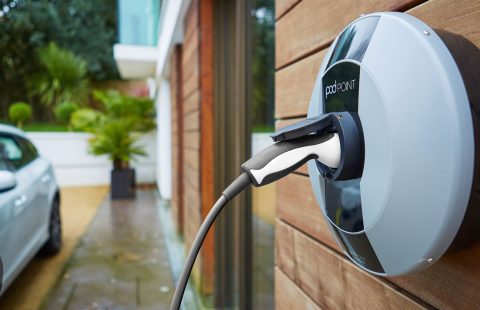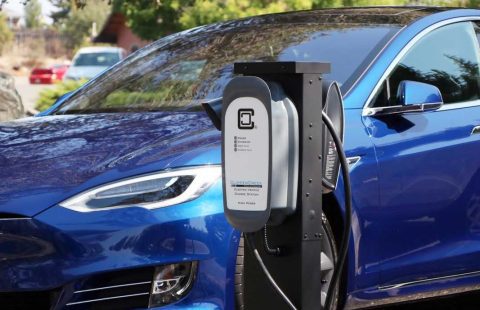
Canada enters the electric car industry
Canada is building the infrastructure to produce electric vehicles. The new announcements could create a leap in the production of electric cars. Most Canadians intend to buy an EV in the next five years. The statements regarding EVs may represent significant opportunities for Canadian vendors who currently serve or wish to serve the automotive supply chain. Three auto assemblers recently submitted plans to manufacture electronic components, or “EVs,” in Canada, representing billions of dollars worth of investment, Canadian media reported. Auto parts giants Magna Intl and Dana Inc. also plan to expand their EV operations, while other organizations are designing domestic electric vehicles.
These recent announcements from auto OEMs are very encouraging and timely, especially given the declining Canadian auto sector and lagging EV production. Over the past two decades, Canadian motor vehicle production has declined from more than 2.5 million per year to about 1.9 million, and Canada has lost five vehicle assembly plants. Pembina Institute analyst Cedric Smith has mentioned this statistic. In April 2020, Smith wrote an article called “Power Play”: “Canada’s Role in the Move to Electric Vehicle Production.” It found that only 9,000 EVs were produced in Canada in 2018, based on the latest year for which we have figures. Builders are coming. Smith expects that figure to increase if some of the following announcements materialize:
Builders are coming
Smith expects that figure to increase if some of the following announcements materialize:
In September 2020, Ford Motor Company of Canada and UNIFOR (Ford Associates Union) reached a labour agreement that includes a plan to build BEV battery-powered vehicles at Ford’s Oakville, Ont., assembly plant in Oakville, Ont.
Combustion was “ICE.” A $1.8 billion CDN initiative is needed to prepare this project. After that, Ford plans to produce five different BEVs at the plant by 2028. In mid-October 2020, Fiat Chrysler Automobiles (FCA) announced its contract with Unifor. The deal includes a $1.5 billion investment to build plug-in hybrid or fully electric vehicles in Ont. However, FCA recently merged with the French company Groupe PSA to form a new corporate entity known as Stellaris.
In January 2021, General Motors unveiled the BrightDrop EV600 electric commercial vehicle production program at its CAMI plant in Ingersoll, Ont. This zero-emission car, “EV600,” can travel 400 km on a full charge. They made some of these transactions with government cash. In October 2020, the federal and Ontario governments pledged $295 million each to help Ford continue its Oakville operation to produce electric vehicles. Ottawa’s contribution was $300 million for a series of EV fast charging stations across the country. These developments are potentially good news for machine shops, provided they can adapt their operations to meet the needs of the EV supply chain. While some electric vehicle components are the same as those in gas-powered cars, powertrain components such as electric motors, transmissions, and batteries are unique to the EV.
“When we’re talking about electric vehicle components, obviously the battery is the focus,” Smith said. Ontario’s economic development minister, Vic Fedeli, has said in the past that the province is well-positioned to be a leader thanks to an extensive automotive supply chain and an abundant supply of nickel, lithium, cobalt and other materials used to make batteries. The production of battery “EV” will become. The city of Windsor is working with federal and provincial authorities to host a $2 billion EV battery. In comparison, the province of Quebec has earmarked nearly $1.5 billion for EV battery manufacturing, research, and development. Some auto parts suppliers are ahead of others. For example, Dana already has extensive EV operations in Ontario and Quebec, including a facility in Oakville. It is a global technical center of excellence for what we refer to as thermal management products, including thermal management of electric vehicles. These include items such as battery coolers and electric electronic coolers. Steven Monte, Vice President of Technology, American Power Technologies at Dana Inc., emphasized this issue.
EV products are also manufactured at a 10,000-square-foot facility operated by Dana in Cambridge, Ont. Between Oakville and Cambridge, the company employs about 230 people. Most of Cambridge’s operations today have shifted to EV-type components. As we advance, Cambridge will focus on EV products in particular. We expect our EV business to continue to grow and expand. The company is also involved in a joint venture with Hydro-Quebec called Dana TM4. This project focuses on producing electric motors, control systems, power electronics and various installed generators. Components manufactured by Dana TM4 are ultimately used in electric passenger cars and commercial, marine, rail, off-highway and recreational vehicles. In January, Dana TM4 unveiled a wide range of SUMO HP electric motors and inverters for electric vehicles.
Aurora, a manufacturer of auto assembly parts, has also been a pioneer in the EV segment. In December 2020, Magna announced that it had formed a joint venture with South Korea’s LG Electronics to manufacture electronic motors, internal chargers, electronic drive systems and inverters for electric vehicles. A new company called LG Magna e-Powertrain will manage these activities. The LG Magna e-Powertrain won’t be setting up shop in Canada. Still, Magna is also building a facility in St. Clair, Michigan, which will hopefully be close to Canadian suppliers. In February 2021, Magna provided 345,000 square meters of land. To produce power generators and battery compartments for the 2022 GMC Hummer EV.
Auto Parts Manufacturers’ EV Designs AssocAPMA, the trade group representing Canadian auto parts manufacturers, has embraced the trend toward electric vehicles. This association pioneered an investment called “Project Arrow” to introduce Canada’s first full-fledged original car. The zero-emission electric propulsion concept vehicle named “Arrow” is designed and engineered in Canada. “APMA” currently supplies the producers of “The Arrow” project.
Arcadius Kaminsky, CEO of Toronto-area startup AK Motor Intl, said the company is determined to pay APMA. Kaminsky wants to build the Maple Majestic, a Canadian electric car that he sees as a boon for the industry. There is a symbiotic relationship between component suppliers and OEMs in Canada. If the OEMs leave Canada, the parts supplier business will disappear. Likewise, attracting and retaining OEMs will be challenging if their component suppliers provide their services. Our business model aims to build the Canadian auto industry by creating an intrinsically Canadian brand that we cannot fully transfer to the rest of the world. In line with this, we are creating the first modern Canadian OEM to operate in Ontario, manufacturing our machines for the global market using Canadian component suppliers wherever possible.
The company is in its early days, and Kaminsky is trying to get suppliers and manufacturers on board. He already has ideas about the ingredients he wants to use. I believe that aluminum processing will become a significant need. Fold aluminum sheet structures glued together are a good starting point for vehicle construction to reduce sheet steel costs. Shops looking for EV work must also consider the extensive infrastructure being built to power these vehicles. For example, Toronto’s “eCAMION” company designs, manufactures and installs electric car charging stations. Joule charging stations are built around lithium battery storage units and can be installed anywhere. It is Canadian technology.
We made everything here with the University of Toronto and our engineers.
We are the first in the world. “Carmine Pizzurro,” the founder of “eCAMION,” emphasized this issue.
The company has installed energy storage systems in Toronto, Michigan, Ottawa, Sudbury and York Region in Ontario, as well as EV fast charging stations in Ontario, Michigan and Manitoba. Joule charging stations provide power for electric cars, trucks, vans and buses. It is important because Canada has a growing HDV heavy-duty electric vehicle manufacturing sector, which may also provide opportunities for machine shops. The leading companies in the HDV field are: The Lion Electric Co., Build Your Dreams, BYD, Nova Bus, New Flyer, and GreenPower Motor Company. These companies produce electric buses and other “HDVs.”
The outcome of Project Arrow, Maple Majestic, and significant EV investments from automotive OEMs has yet to be discovered. If recent developments are anything to go by, electric cars are poised to enter mainstream production circles in a big way. The transition to electric vehicles is inevitable. Canada’s auto sector needs to get into EVs to reduce emissions and create manufacturing jobs. Clean Technology meets EV Calgary-based clean technology specialist Exro Technologies has developed a new class of power electronics for electric motors and batteries and launched a new automotive-class manufacturing facility. The new facility will have 37,000 square feet of production line, product showrooms and office space capable of producing units for the entire Coil Driver product line.
The opening of the new facility paves the way for Exro to execute its strategic roadmap as a supplier to the automotive industry. Providing a foundation for the company’s growth over the next three years, the facility capacity is designed for up to 100,000 units per year of all Coil Driver products, including the product roadmap. It supports the company’s strategic milestones to focus on low-volume production while leveraging manufacturing partners and licensing agreements for future high-volume production. This license is compatible with ISO 9001:2015-, IATF-16949-, and ISO 26262 certifications.
Functional safety and quality management system planning is currently underway and will be given the highest level of attention to meet expectations for optimal product delivery. This center is supposed to be opened before the end of 2021 for employees and authorized car production until the end of 2022. Exro’s current Calgary facility will continue to be a source for commercial low-volume output to lower-order motion applications with in-house design, testing and assembly. It will remain the center of innovation in research and development, design and testing, and prototypes of coil drivers, battery control systems and future technologies.
The future of electric vehicles in Canada
In a recent survey by KPMG Canada, 68% of Canadians who plan to buy a new vehicle within the next five years are likely to buy an electric vehicle (EV), pure or hybrid. However, the lack of robust charging infrastructure, battery life and range, and purchase price remain constant concerns.
Canada’s automotive industry is approaching a tipping point, with almost 70% of Canadians indicating they are looking to purchase an electric vehicle not within a decade, but within the next five years,” said Peter Hedges, partner, national sector leader. ». Our survey research shows tremendous consumer demand in Canada for electric vehicles, with manufacturers and governments tasked with shifting gears to meet the expected increase in electric car sales and invest heavily in the necessary infrastructure.



